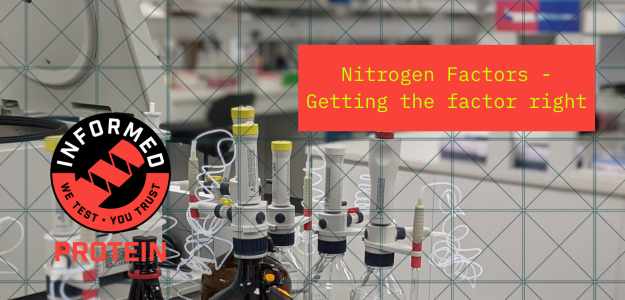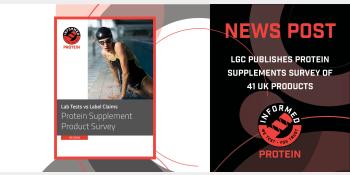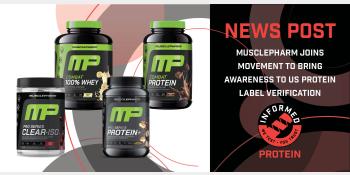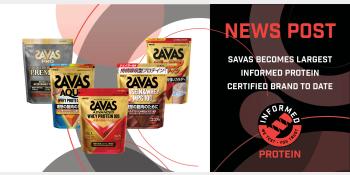Informed Protein News
Nitrogen Factors - Getting The Factor Right

Protein is a large, complex molecule that is made up of chemical building blocks called amino acids. A fundamental component of amino acids is nitrogen, an element which is often measured to estimate the protein content of food products. Traditional protein testing methods, including those accepted by the FDA to determine protein content for Nutrition Facts labels, use the above principles. The measured nitrogen is multiplied by a nitrogen-to-protein conversion factor, allowing the estimation of, what is referred to as, crude protein. The ‘protein’ shown on the Nutrition Facts label is typically the amount of crude protein in a serving of the product.
The default nitrogen-to-protein conversion factor (6.25) is a standard, widely accepted factor used for estimating protein content and has been in common use since it was published in 1931. This has been the default factor over the past 90 years based on the assumption that, on average, protein contains 16% nitrogen. Protein sources such as meat and eggs contain approximately 16% nitrogen, however, milk protein contains slightly less (~15.7%), and soy protein contains slightly more (~17.5%), resulting in published conversion factors of 6.38 and 5.71, respectively. A mix of proteins, like a blend of 30% milk and 70% soy protein would contain a proportionally different amount of nitrogen (~16.9%) and thus warrant the use of a bespoke nitrogen factor.
The International Protein Board has drawn attention to these discrepancies and advises that accurate assessment of protein content requires consideration of the nitrogen-to-protein conversion factor, especially for products with more than one protein-based ingredient. Instead of the default nitrogen-to-protein factor (6.25), the Informed Protein program utilizes factors which are specific to the type of protein (or mix of proteins) in the product. The protein type in the product is matched to the appropriate conversion factor (where published) and, in alignment with the International Protein Board, blended proteins are assigned a custom factor based on the product formulation.
Nutritional supplements are manufactured to a product formulation typically dictated by the brand owner. These formulations also commonly rely on the default nitrogen-to-protein conversion factor, which can result in brands finding themselves with products that fall short of label claim requirements. In addition to protecting the consumer, the Informed Protein program’s use of protein-specific and custom-derived factors also safeguards the certified protein supplement brands from miscalculating label claims and providing suboptimal products.
The use of custom nitrogen-to-protein factors is a distinctive component of the Informed Protein lab-tested protein program, ensuring a more accurate calculation of the amount of protein in the product is obtained. Informed Protein certification verifies the amount of protein determined is reflected on the product label, providing assurance to the consumer that they are getting the amount of protein they are paying for and providing confirmation to supplement brands that they are providing correctly formulated products to their customers.










